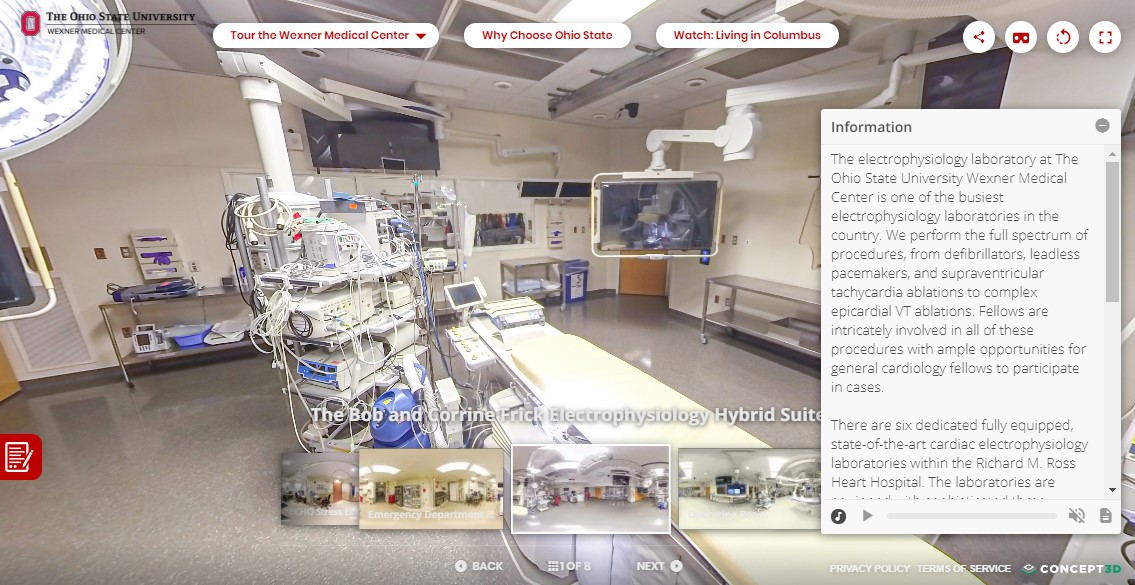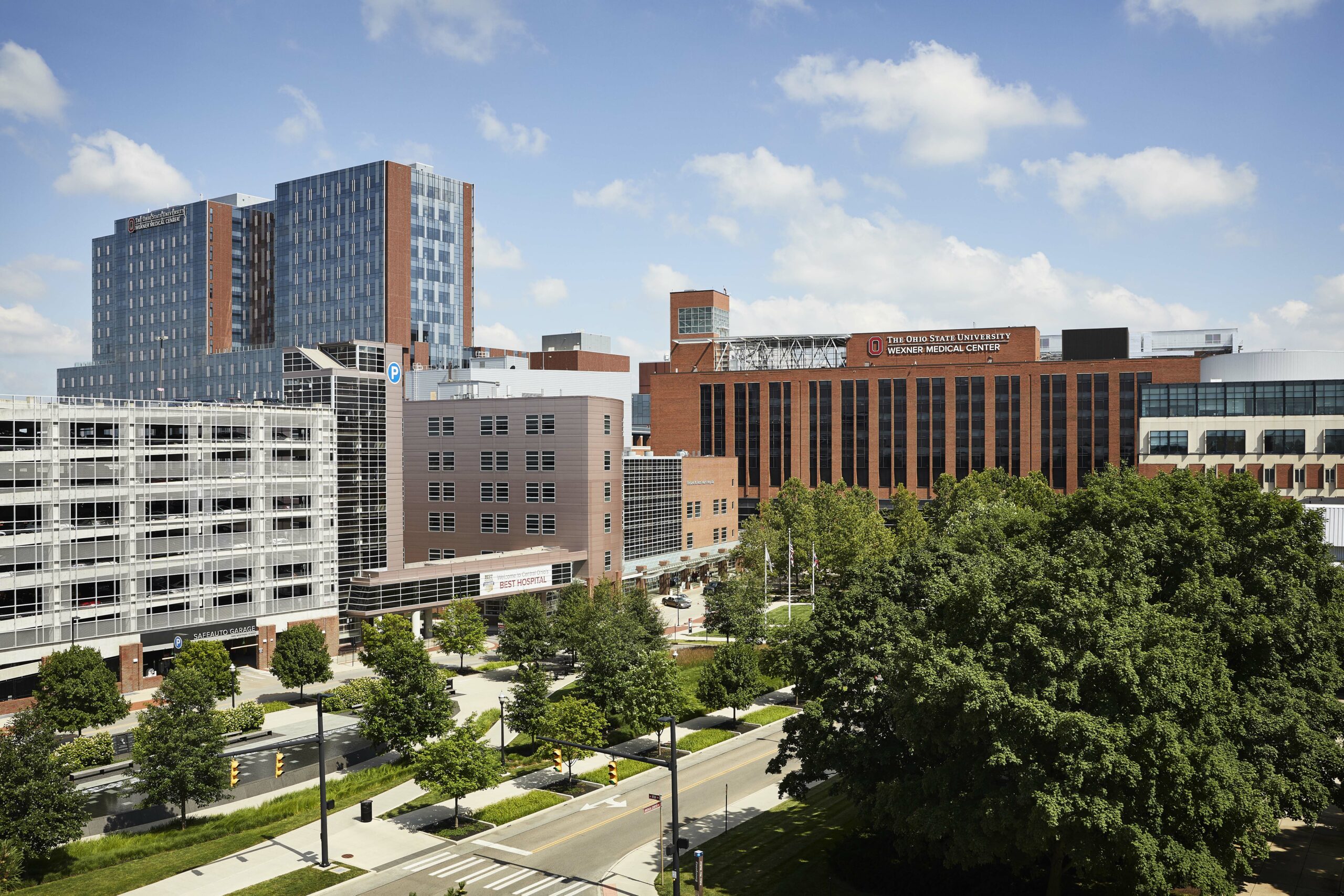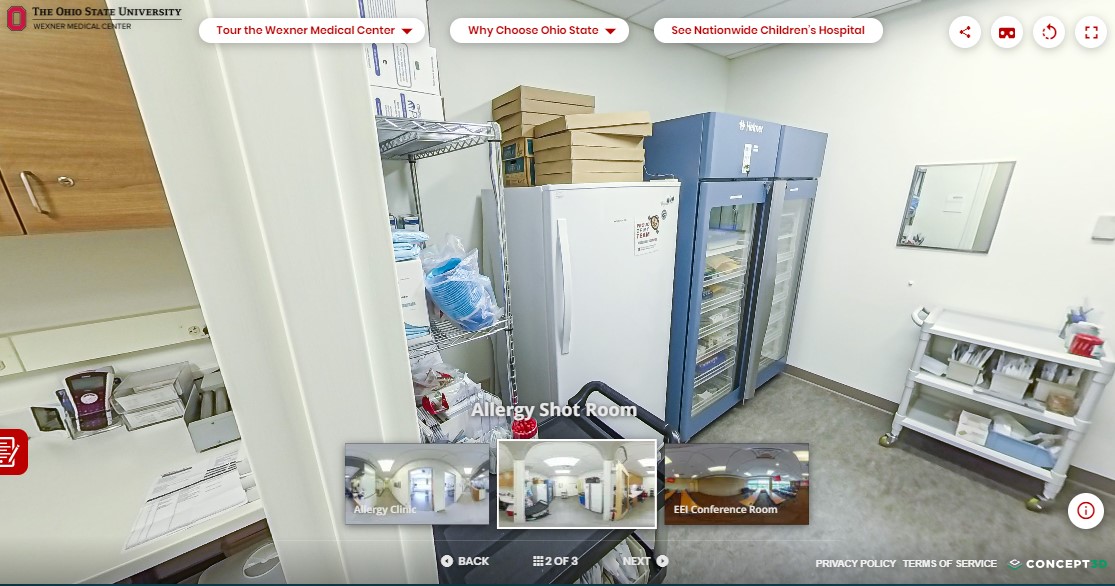The first visit to any campus can be a make or break moment for those interested in pursuing further education. They’ve done their research and are keen to take a spin across the grounds, interview and get on a tour that might change their lives forever.
In turn, colleges and universities have much to gain from their arrival, not the least of which is the blessing that the institution they’re seeing is the one they’ve been looking for.
But what happens when complications arise and they can’t travel there or the institution restricts access to them? How can they ensure it’s right for them?
Like many institutions, The Ohio State University’s Wexner Medical Center and its residency/fellowship program faced that dilemma back in April and May when COVID-19 struck. Trying to pull off in-person tours during a pandemic at medical facilities proved to be too complex.
“A lot of the organizations that oversee our residents and fellowships and how they’re selected throughout the country got together and thought, this isn’t really safe,” said Scott Holliday, MD, and Associate Dean for OSU’s Graduate Medical Center. “It’s not a good idea to have all of our residents and fellows traveling across the country to interview.”
So, Holliday and his team turned to Ohio State’s marketing department for help. Out of those discussions came a solution that, on paper, looked great but on a computer screen looked even more amazing:
Head-turning, self-guided and narrated virtual tours of facilities and showcase spaces that give potential recruits the feeling of being in an operating room or waiting room without actually being there. They are so comprehensive that, Holliday admits, interested students might see more than they would if they were actually in Columbus.
“The marketing team did an amazing job. We gave them the bare bones, and they brought this great work to life,” Holliday says. “We gave them a very tight deadline. We gave them the subject matter experts and training programs, and they used their expertise to hook people and show the robustness of what we had to offer. It turned out really well.”
In all, there are 41 interactive, 3D tours available to be viewed – from the Wexner Medical Center to the Comprehensive Cancer Center & James and Ross Heart Hospitals. There’s even a virtual reality mode that brings prospective students into those facilities. Along with the stunning visuals, there are information blocks describing the programs, their missions and the facilities as well as 245 different voices to guide them on their way.
“I think the overarching message was this is an opportunity to select and to recruit the best physicians we can for this institution who are taking the best care of our patients,” Holliday says. “We certainly didn’t want to fall flat in that mission by not being able to put our best foot forward. So it did take some effort and a lot of people working together to really show off what we have to offer here, to really catch the eyes of people to say: I hadn’t really thought about Ohio State as maybe the place to go, but now I’m going to.”

Bringing it to life
Every year during different seasons, each of the Ohio State medical programs conducts interviews and students come to campus. Thousands apply to get into the programs, and Holliday says “it’s a whirlwind of people traveling from across the country and across the world to come to different programs, to check them out and to get a chance to understand if the program might be a good fit for them.”
Recognizing that they had to do something different to prepare for August interviews, the medical residency/fellowship program and marketing team forged the plan for virtual tours. Because many university-wide faced challenges early on during the beginning of the pandemic, it had some experience in being able to creatively pivot to new strategies of outreach.

“By the time May got around, we were really into a mode where as an institution, we were pretty good at making things happen a little more quickly because we’ve had a lot of urgent situations come about,” Holliday says. “We had to make a lot of clinical decisions quickly. We had to make a lot of operations decisions quickly. So when I shared this information with leadership at the College of Medicine and the Medical Center, there was a really good understanding of what [needed to happen].”
Over the next 10 weeks, they collaborated on the project and a series of steps to get it published in time:
- They secured a vendor, Concept 3D, to help with the software for virtual tours
- They shot an abundance of video and photos around the Medical Center, ending up with about 200 high-quality, 360-degree images of different locations.
- And they reached out to residents in individual programs who could give narrations about the buildings and how programs interact with each of the facilities.
“Since these are educational programs, we certainly wanted to highlight some of our educational resources, whether it was simulation areas or areas for didactic and other educational opportunities,” Holliday says. “But to also get a sense of how our space lends itself to quality care and lends itself to paying attention to the patients and the patients’ needs. We wanted to highlight those features of our facilities. The other piece was to really focus on how the individual trainees within those programs integrate into that space.”
Holliday says the most impactful visual for viewers might be the tour of the operating area.
“How surgeons interact in the ORs is very different from how the anesthesiologists interact in the ORs,” he says. “Being able to give both of those perspectives on how that space is utilized and how it meets their needs and how it promotes good supervision, good education, good learning and good patient care experiences was really what we wanted to accomplish.”
The OR is just one of a number of eye-catching tours offered to those interested in the programs. There are glimpses of common spaces such as research and education at Prior Hall, the Brain and Spine Hospitals and outpatient facilities, as well as windows into specific programs such as allergy and immunology, cardiovascular medicine and sleep medicine.
“We wanted to highlight the things that help us stand out and emphasize our educational mission,” Holliday says. “We hit more of our simulation center and things like that that can really address how we help to educate our residents, not only in the clinical environment, but also in the educational environment.”

The future of virtual tours
Even though recruits outside of Columbus are looking at many of the spaces virtually now, when they finally do arrive on campus they will face a mix of both virtual and in-person instruction.
“Health care unfortunately doesn’t lend itself to virtual learning,” Holliday says. “So with very strict precautions in place and a lot of guardrails around what we’re doing, we’re doing in-person and virtual education. When we can do it virtually great. That keeps our learners and our faculty safer, and thereby our patients safer.”
The value of the tours, Holliday points out is that they give opportunities to those from far away – not just during a pandemic, but in general and where time might be limited – a chance to visualize programs and facilities up close. But can they help bring in more interested students?
“I think we’re in a unique situation this year where I’m not sure any of us really know exactly how many people will apply to our program,” Holliday says. “Historically, the applicants were somewhat limited by the cost of having to travel a bunch of different places. But as we’re in a virtual world right now, that cost of airplanes, hotel stays, the suits, the food and all that stuff kind of goes out the window. We anticipated a lot more people would be applying to more programs, because they had a better opportunity to see more programs.”
Even when campuses return to normal at some point, Holliday thinks the virtual tours will survive in some form.
“I suspect this is to some degree, a part of the new normal,” he says. “I think this provides opportunities for residents and fellows who may not have the resources to travel in the future. How does this help us address our diversity mission and bring people in from underrepresented backgrounds into our institution at a lower cost to interview? I think we will have live and virtual opportunities for interviewing in the future. I think this opens up our ability to give different offerings based on what different people need for where they are and how things are, especially for some of our fellows.”
Chris Burt is a reporter and editor for University Business. He can be reached at [email protected]





